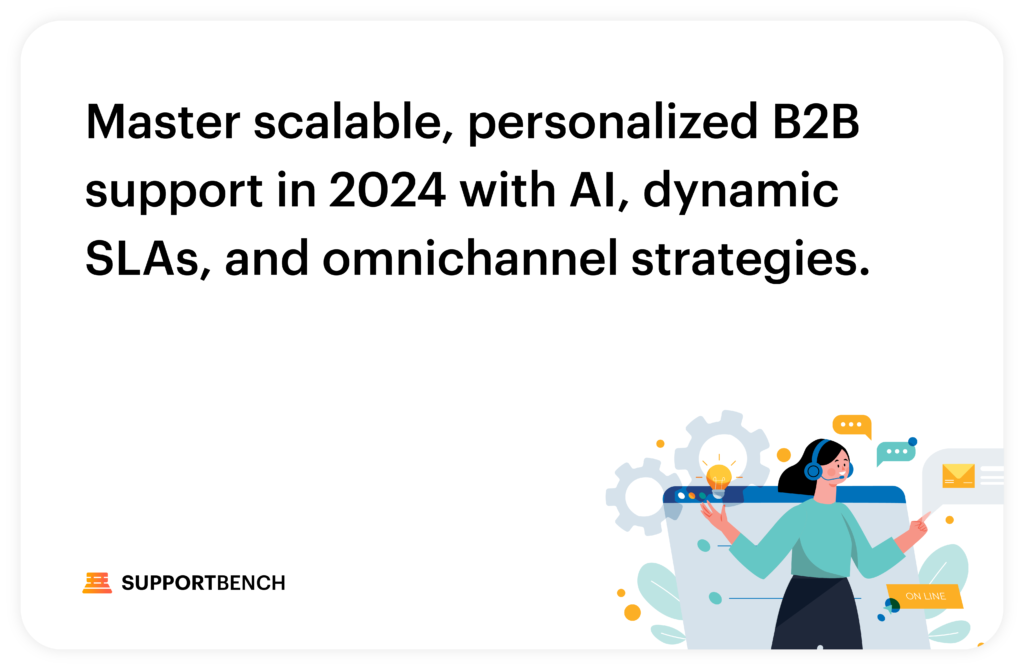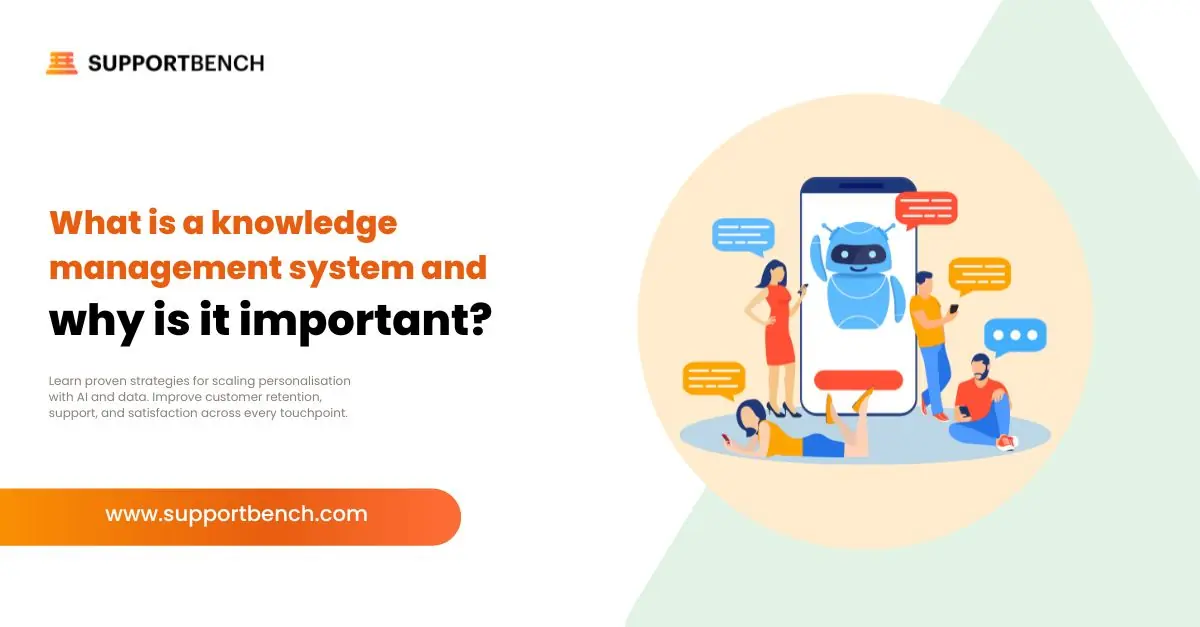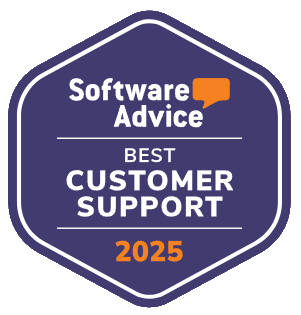In today’s increasingly digital world, B2B customer support has emerged as a pivotal touchpoint between businesses and customers. The challenge facing many of us, especially those experiencing rapid growth, is how to maintain the intimacy and personalization of our customer interactions while simultaneously scaling support operations. This balancing act is not just about retaining a human touch in a digital world; it’s about crafting a customer support experience that feels both personal and efficient, irrespective of the size or scope of the operation.
The evolution of Customer Support Platforms has shifted from one-size-fits-all solutions to more nuanced, customer-centric approaches. This change is driven by a growing understanding that personalized customer experiences foster loyalty and enhance overall satisfaction. However, as your company grows, you face the complexity of scaling this specific type of personalization. The challenge lies in implementing support systems and practices that are robust and scalable, yet flexible enough to provide an exceptional experience to each customer.
Let’s explore and elucidate methods that can help businesses strike this delicate balance. We’ll delve into the latest trends, strategies, and actionable insights that can guide support leaders in enhancing their team’s effectiveness while scaling their operations. And by examining the experiences of successful organizations, we can distill key lessons and best practices that are crucial in this endeavor.

The Need for a Balanced Approach
Now, more than ever, a balanced approach in customer support is critical to the bottom line of your company. A Salesforce report indicated that a staggering 84% of customers view the experience a company provides as being as important as its products or services. This is a clarion call for businesses to reevaluate and realign their customer support strategies. Clearly, the customer experience is not just an ancillary aspect of business operations but a central component of a brand’s value proposition.
This need for balance extends beyond the dichotomy of personalization and scalability. It encompasses the integration of technology and human touch, the alignment of speed and quality, and the harmonization of customer expectations with business capabilities. The approach should be nuanced, recognizing that each customer interaction is an opportunity to reinforce brand values, build loyalty, and enhance satisfaction.
To achieve this, businesses must invest in both technology and training. Advanced customer support tools such as AI-driven analytics, dynamic self-service portals, and sophisticated CRM systems can provide the necessary scalability. However, these tools must be complemented by a human element – well-trained, empathetic support staff who can use these tools to deliver personalized, context-aware support.
Furthermore, data-driven insights play a critical role in striking this balance. By understanding customer behaviors, preferences, and feedback, businesses can tailor their support strategies to meet and exceed customer expectations. This involves not just collecting data but analyzing it to draw actionable insights that can drive continuous improvement in customer support operations. Below are 5 Actionable trends that Support Leaders can do immediately to harness the benefits of balancing personalization with scalability.
5 Actionable Trends:
Trend 1: Leveraging AI for Enhanced Personalization
Amazon leverages AI to not just recommend products but also to personalize the entire customer journey, from product discovery to post-purchase support. Here’s 3 things you can do immediately in your Support Department.
- AI-driven Sentiment Analysis: Begin using AI tools like those offered by more modern Support Platforms to help you revolutionize your customer interactions. These newer tools analyze the tone, language, and context of customer communications to gauge their emotions. This insight will allow your support and success teams to respond in a manner that resonates with the customer’s current emotional state, making interactions more empathetic and effective.
- Predictive Analytics for Personalized Interactions: AI algorithms can sift through customer data to anticipate their needs and preferences, even before the customer articulates them. This proactive approach in customer support can lead to highly tailored solutions, enhancing customer satisfaction and loyalty.
- Automating Routine Inquiries: By automating responses to common questions, you can free up your agents to focus on more complex and personalized customer interactions. This not only improves efficiency but also ensures that your customers receive a personalized experience even when dealing with routine inquiries.
Trend 2: Dynamic SLAs for Tailored Service
We’ve seen what it looks like when Companies prioritize customer satisfaction above all else. There is no better brand strategy. Zappos is one of the best at this. They’re so well known for their flexible and trully customer-centric approach to support, often going above and beyond standard SLA requirements to deliver exceptional service. Gone are the days of the static SLA, it’s dynamic and customizable or bust!
- Customize SLAs Based on Customer Importance: You need to be able to differentiate SLAs based on the value or needs of each specific customer so that you can ensure resources are allocated efficiently. Particularly in the B2B, you need to be certain that your high-value customers receive the attention they require.
- Incorporate Real-Time Data for SLA Adjustment: By using real-time data, like contract renewal dates or customer engagement levels, you can dynamically adjust SLAs. This ensures that the level of support provided is always aligned with your customer’s current situation.
- Regular SLA Reviews and Updates: you need a System that has customizable and dynamic SLA’s, but you also need to continuously evaluate your of SLAs based on your customers’ feedback and performance data so that the support provided remains relevant and effective.
Trend 3: Omnichannel Support Strategies
When we think of Apple, perhaps we think of a pretty seamless customer experience across channels, in order to maintain consistency in quality and response. In the same way, your Support Platform and AI modules need to be Omnichannel.
- Unified Customer Data Across Channels: When you centralize your customer data, you’re ensuring that regardless of the channel — be it email, chat, social media, or phone — your support team has a complete view of your customer’s history and needs.
- Channel-Specific Training for Agents: Training your agents to specialize in specific communication channels ensures that they are not just knowledgeable in support protocols but are also adept at using the unique features and tone suitable for each channel.
- Regularly Analyze Channel Effectiveness: Continuously assessing which channels are most effective for different types of customer interactions helps you optimize your overall support strategy.
Trend 4: Customer Health Scoring
Salesforce effectively uses customer health scores to anticipate needs and personalize support. They don’t just use it as a metric but as a proactive tool to tailor their success initiatives.
- Develop a Robust Scoring System: It’s vital to have a Support Platform that has a health scoring system that takes into account various factors like product usage, support interaction history, and customer feedback so it can help in accurately assessing the health of each of your customer relationships.
- Use Scores to Prioritize Support: We know in the B2B we HAVE to attend to our high value customers. Using a system that can seamlessly give you automatic health scores is a game changer. You’re able to prioritize customers with lower health scores for support interventions and you can prevent churn and improve customer satisfaction.
- Continuously Update and Refine Scoring Metrics: As your business and customer dynamics evolve, so should the metrics that define customer health, ensuring that the scoring system remains a reliable tool for decision-making.
Trend 5: Knowledge base is King!
A great example of this is IBM. Their focus on continuous learning and knowledge sharing has been integral to its reputation for providing knowledgeable, efficient and highly personalized customer support.
- Utilize Knowledge Bases: I can’t speak to this enough. This will speak volumes to your level of customer and agent satisfaction. You must implement and regularly update your knowledge bases, like Knowledge-Centered Service (KCS). This will ensure your support teams have quick access to relevant information, improving response times and accuracy.
- Invest in Regular, Advanced Training: Continuous investment in training will ensure that your support teams are adept at using the latest tools and are equipped with up-to-date knowledge about products and customer support techniques.
- Promote Knowledge Sharing: Fostering an environment where your team members share insights and solutions can significantly enhance the collective knowledge and effectiveness of your support team.
The Role of Supportbench in Balancing the Equation
Supportbench uniquely addresses these challenges. Its integration of AI-driven summaries, sentiment analysis, and intent detection offers unparalleled personalization capabilities. The platform’s dynamic SLAs and customer health scoring empower businesses to provide individualized service levels, adapting to the unique circumstances of each customer. Moreover, Supportbench’s customizable dashboards and reporting tools provide the data-driven insights necessary for continuous optimization and innovation in customer support strategies.
Conclusion
Balancing personalization with scalability in customer support is a complex but achievable goal. By embracing trends like AI integration, dynamic SLAs, omnichannel strategies, customer health scoring, and advanced training, support leaders can significantly enhance their customer support operations. Supportbench stands at the forefront of this evolution, providing the tools and insights necessary for businesses to thrive in this dynamic landscape, ultimately leading to enhanced customer satisfaction and business growth.















